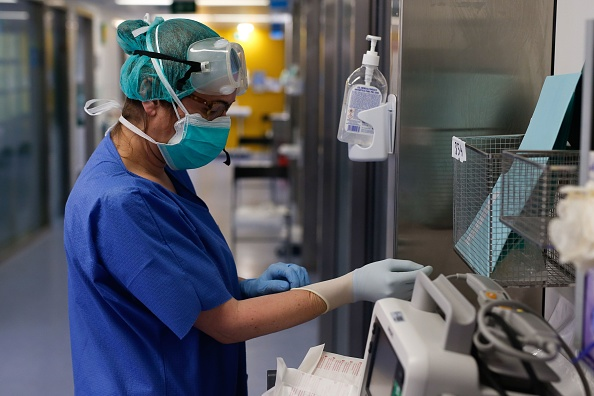Being flexible, having a mission control center and technology tools, and making a quick transition to telehealth have helped health care leaders who are developing strategies to fight the novel coronavirus respond to rapidly increasing patient volumes.
“We have to be nimble, flexible, adaptable in this incredibly changing environment,” Dr. Amy Compton-Phillips, executive vice president and chief clinical officer at Providence St. Joseph Health, said in a webinar hosted by Modern Healthcare.
Compton-Phillips said having the first inpatient in the US with a confirmed case of COVID-19, the infection caused by the coronavirus, made the virus real to staff early on, and they knew they had to use analytics to understand it. They also quickly understood that if cases increased, they needed to find a way to treat patients without overloading hospitals.
“So we started thinking, ‘How can we rapidly scale our telehealth assets and our online tools?’” Compton-Phillips said.
The West Coast-based health system created chatbots for the public, so people who searched online for coronavirus would be directed to a self-screening tool. People were given appointments online for drive-through testing. A remote home-monitoring program was started, and only 13 patients needed hospitalization out of 700 who were monitored at home. Telehealth was scaled up for rural hospitals as well, allowing for virtual visits between patients and caregivers.
With testing capacity limited, the health system developed CoVERED, a surveillance tool for symptoms, and then enhanced it to help predict hot spots and flow management issues, Compton-Phillips said. Apps were created so bedside caregivers could enter patient data into the system from their phones.
CHI Franciscan health system in Washington state also expanded its coronavirus-related telehealth and virtual care, providing more than 2,500 virtual urgent care visits and using virtual technology in 140 patient rooms, said Mary Ragsdale, chief operating officer at CHI Franciscan St. Anthony Hospital. Similar to Providence St. Joseph, CHI Franciscan uses a chatbot interface to do symptom checks and direct patients to appropriate care settings.
CHI Franciscan was the first system in the state and seventh in the nation to launch a NASA-style mission control center using artificial intelligence, and it has been a big help in the response to the coronavirus pandemic. When the center opened in August, staff did not fully realize what it could do, but with the coronavirus it allows them to respond to bed numbers in the system and deploy teams, patients and resources to the appropriate locations, Ragsdale said.
“With the launch of mission control, what it is doing is allowing us to function as one CHI Franciscan, and helping us to move our patients through our system in a more seamless, more timely, more predictive and proactive way, which has been really critical and important in our response to COVID,” Ragsdale said.
Rush University Medical Center in downtown Chicago got an early start preparing for COVID-19 using some special capabilities built into its newest tower, which opened in 2012 with post-9/11 disaster and mass casualty responses in mind, said Chief Medical Officer Dr. Paul Casey.
The goal, Casey said, was to stay several steps ahead in planning operational needs and putting resources where they are needed.
About a month ago it opened a preliminary coronavirus triage area, which includes a covered entry bay for ambulances in the Emergency Department to allow isolation of patients for evaluation and treatment. Space was converted to create additional intensive care areas, and double-occupancy rooms were readied for a patient surge.
Casey said staff had conducted drills over the years to prepare for a mass casualty or pandemic event. “These were things we had done before. They were things we had drilled for, and I think staff felt more prepared in that regard,” Casey said.
Rush opened COVID-19 walk-in clinics and a drive-through clinic, and as with Providence and CHI Franciscan, quickly moved to leverage its virtual care platform. Free video visits are available for people concerned about the virus and for those whose screenings indicate they have symptoms, Casey said.
All three health systems focus on patient and staff safety, transparency in their communications and ensuring they have sufficient supplies and equipment as they respond to the growing crisis.
“What we could relate to a lot of other systems throughout the country and throughout the world is that we really have had a tremendous amount of change within the past three weeks that would have otherwise taken us years, really, to accomplish,” Casey said.
Ellen Beck is a SmartBrief writer who contributes to health and wellness briefs. She has been a journalist for more than 30 years for print, wire service and online publications, and in radio news. She specializes in health care reporting and analysis.
____________________________________
For more news like this, check out SmartBrief’s health care newsletters, covering health IT, health insurance, health care providers and more, delivered straight to your inbox.
